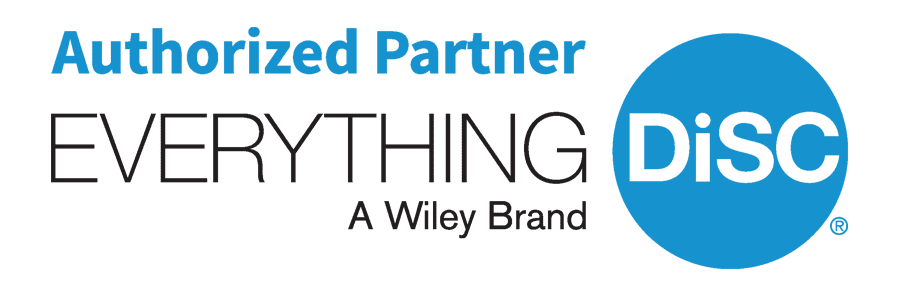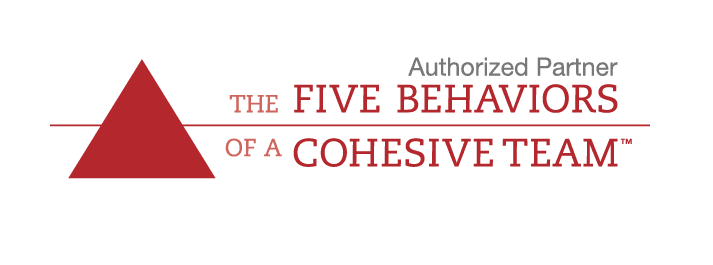Case Study: DiSC Classic Creates a Culture Shift in a Non-Profit Organization
The DiSC Classic 2.0 provided a cost effective tool for providing insight into how to be more effective with others and an understanding of how one’s behavioral style impacts others on a team.
Client
- Non-profit health care organization (HCO)
- Based in the U.S. with additional offices overseas
- 280 employees
Challenge
Over the last four years, the HCO’s policy division, based in Washington, D.C., has hired three different vice presidents. Recently, a new VP joined the HCO. Within four months of being hired, the VP was instructed to reduce her staff by 30 percent due to the downturn in the economy. As a result of the downsizing, the remaining staff’s behavior shifted: they attempted to exert control. Their office had lacked consistent authority and control for a substantial length of time; the staff started acting out.
They tested the new VP by challenging her decisions. In addition, the staff was unwilling to collaborate across departments and divisions. The VP wanted her directors to take initiative and draft a plan, but the directors felt unclear about the overall vision and direction. As a result, the public policy division was unable to clearly articulate and submit its goals in a timely manner for approval by the HCO’s national board.
Solution
There were several issues at the core of this conflict:
- Historical lack of leadership, exacerbated by an intense environment.
- New VP spends most of her time on Capitol Hill working on health care reform.
- No strong leader to manage the staff in VP’s absence.
- Lack of interdepartmental cooperation and unhealthy competition across departments.
- Unclear vision and direction for directors.
We divided the intervention into two parts:
- Part I: Help the VP and her directors identify their individual roles in reshaping their division.
- Part II: Transfer the learning to the larger division by examining the group culture.
Part I
We planned a half-day seminar for directors only. We decided to use the DiSC Classic 2.0 Profile. Access codes to take the assessment could be sent via email, and personalized reports could be printed before the seminar—saving class time. The directors saw their DiSC profiles for the first time at the seminar. After the directors read and discussed the results of their DiSC profiles, they each shared:
- Ways they could be more effective with others.
- The impact their styles have on their respective teams.
Part II
Two weeks later, the entire division participated in a half-day seminar. Each person received his or her own DiSC Classic 2.0 Profile.
First, the directors modeled transparency by sharing with the staff what they learned about themselves and validating the importance of self-awareness for improving effectiveness both in the office and on the Hill. Second, we used the DiSC Classic Group Culture Report to facilitate a discussion on the division’s DiSC group culture as a whole.
The division had a strong D culture. The VP, most of her directors, and some of the staff were high-Ds. The staff members who weren’t high in D remained passionate and excited about their work, but some felt that the Ds were critical of any signs of hesitation, over-analysis or processes.
Staff members with high-S and C styles were being ignored, often viewed as weak and not “geared up” for the campaign. Those with high D and i styles were viewed as pushy, demanding and uncaring about other colleagues’ feelings. Using the theme of the campaign mode, we instructed them to create a campaign slogan according to behavioral style. They all enjoyed a funny moment when the Ds shouted, “Let’s just get it done!” To which, the Cs promptly replied, “First, just get it together!”
Using DiSC allowed everyone, especially the VP and directors, to recognize how valuable the C and S styles are to help them get “unstuck” and feel less fragmented. By acknowledging each staff members’ unique strengths, the entire team was able to clarify their division goals, including knowing what to work on and what not to spend time and energy on.
Results
Using DiSC, we were able to depersonalize much of the previous office tension, resulting in increased appreciation for differences (and similarities) among staff. People could recognize, understand, and value what each person and their DiSC style brought to the office. This helped the division to create realistic goals for the upcoming fiscal year—and turn them into the national board.
“…clear delegation of tasks based on staff member’s strengths led to crucial teambuilding, fun, and staff appreciation.”
Another result was the division organized a two-day off-site staff retreat. Division staff assigned tasks according to DiSC styles. For example, the VP with the D-style ensured the retreat would happen by clearing her agenda and authorizing resources; the (i)s were in charge of creating and implementing the fun activities; the Ss were responsible for coordinating agendas and logistics; and the Cs handled the budget for food and shopping. This clear delegation of tasks based on staff member’s strengths led to crucial teambuilding, fun, and staff appreciation.[dropshadowbox align=”right” effect=”lifted-both” width=”250px” height=”” background_color=”#e0f3f4″ border_width=”1″ border_color=”#dddddd” ]”…clear delegation of tasks based on staff member’s strengths led to crucial teambuilding, fun, and staff appreciation.”[/dropshadowbox]
In addition, the VP appointed a deputy to provide direction and leadership in the office. Recently, the deputy gave a performance review to an individual that both she and the VP viewed as having great potential. In her preparation for the performance review, the deputy used DiSC as a coaching tool, which she found extremely helpful.
The VP made comments to the deputy that the employee needed “to step up and take initiative.” The DiSC coaching, however, helped the deputy to learn the employee’s DiSC style. The deputy realized what the high-C employee needed, commenting to the VP, “She needs me to be more specific. Standards are important to her. I have to do more than just say, ‘step up and be a leader.'”
Download PDF of Case Study: Using DiSC Classic to Create a Culture Shift in a Non-Profit Organization (PDF, 140 Kb).
For more information about the Center for Internal Change and the Everything DiSC and DiSC Classic products we provide, please call us at (847) 259-0005.
Products Used



Recommended Substitutions


![]() Related Case Study
Related Case Study
Using Everything DiSC Management and Comparison Reports with a Leadership Team
Communication problems, interpersonal conflicts and trust issues for leadership team are improved using the Everything DiSC Management Profile and Comparison Reports.
 Case Study
Case Study
Using ED Management to Reduce Stress and Decrease Turnover
Publicly-traded international oil and gas service company, with 2,000+ employees used Everything DiSC Management Profile to reduce turnover and employee stress.
From DiSC® Classic To Everything DiSC®
How My Graph Became a Dot.




